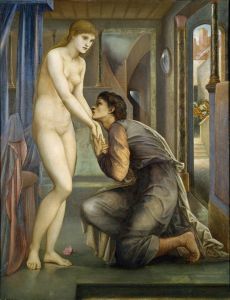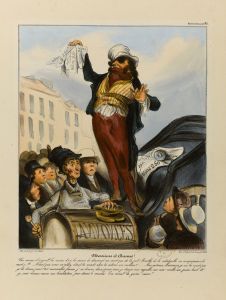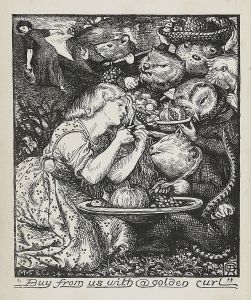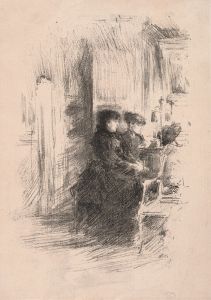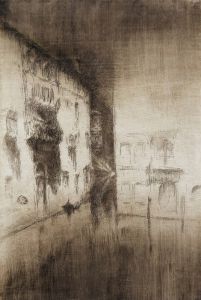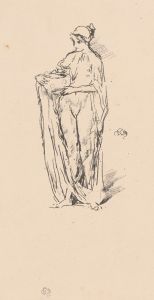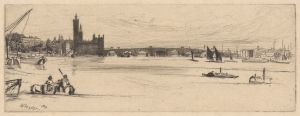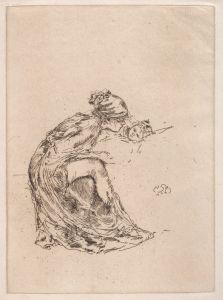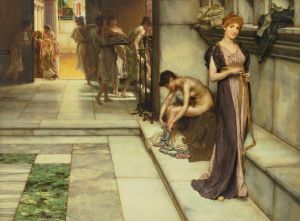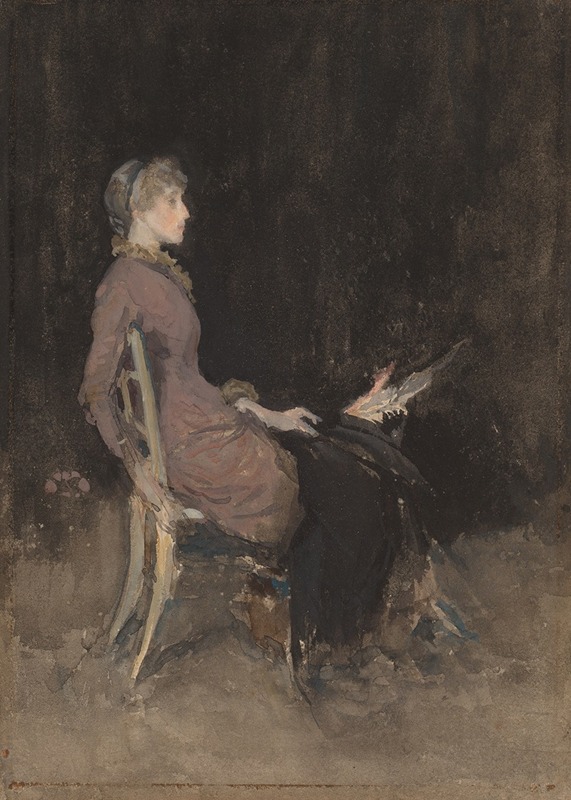
Study In Black And Gold
A hand-painted replica of James Abbott McNeill Whistler’s masterpiece Study In Black And Gold, meticulously crafted by professional artists to capture the true essence of the original. Each piece is created with museum-quality canvas and rare mineral pigments, carefully painted by experienced artists with delicate brushstrokes and rich, layered colors to perfectly recreate the texture of the original artwork. Unlike machine-printed reproductions, this hand-painted version brings the painting to life, infused with the artist’s emotions and skill in every stroke. Whether for personal collection or home decoration, it instantly elevates the artistic atmosphere of any space.
James Abbott McNeill Whistler was an American artist known for his distinctive style and contribution to the art world during the late 19th century. While Whistler is best known for works such as "Whistler's Mother" and his "Nocturnes" series, there is limited information available on a specific painting titled "Study in Black and Gold." It is possible that this title refers to a lesser-known work or a study that has not been widely documented in art historical literature.
Whistler's oeuvre is characterized by his innovative use of color and composition, often drawing inspiration from the aesthetic movement, which emphasized beauty and harmony in art. His works frequently explored the interplay of light and shadow, and he was known for his ability to capture mood and atmosphere with subtle tonal variations. Whistler's approach to painting was influenced by his belief in "art for art's sake," a philosophy that prioritized aesthetic experience over narrative content.
Throughout his career, Whistler experimented with various techniques and mediums, including oil painting, etching, and lithography. His "Nocturnes" series, for example, showcases his mastery of depicting night scenes with a limited color palette, often using shades of blue and green to evoke a sense of tranquility and mystery. These works highlight his interest in the effects of light and his ability to convey emotion through abstracted forms.
Whistler was also known for his contentious personality and his involvement in several high-profile legal battles, most notably his libel suit against art critic John Ruskin. This case, which Whistler won, revolved around Ruskin's harsh criticism of Whistler's work, particularly his painting "Nocturne in Black and Gold: The Falling Rocket." The trial brought significant attention to Whistler and his art, further cementing his reputation as a leading figure in the art world.
Despite the lack of specific information on "Study in Black and Gold," it is likely that the work, if it exists, would reflect Whistler's broader artistic principles and techniques. His use of color, particularly black and gold, can be seen in other works where he employed these tones to create contrast and highlight certain elements within the composition. Whistler's ability to manipulate color and form to achieve a desired aesthetic effect is a hallmark of his artistic legacy.
In summary, while detailed information on "Study in Black and Gold" by James Abbott McNeill Whistler is not readily available, understanding Whistler's overall artistic style and contributions provides context for appreciating any work attributed to him. His influence on the art world remains significant, and his commitment to beauty and aesthetic harmony continues to inspire artists and art enthusiasts alike.





